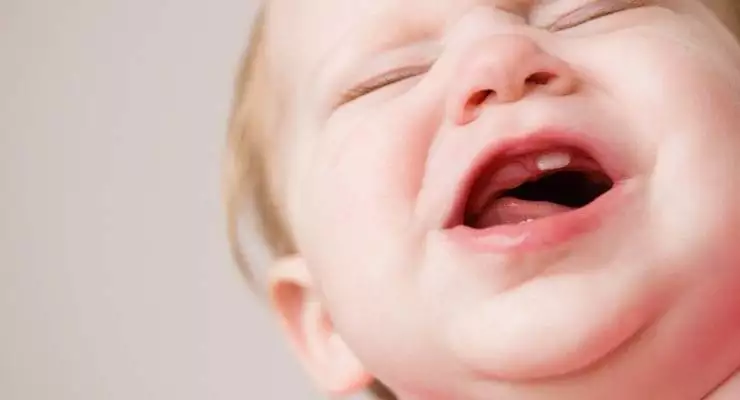Some babies teethe, and you’d never know it until you see te evidence of a brand-new tooth poking through. Not all babies — and parents — have it so easy. Many babies experience varying degrees of discomfort when baby is cutting teeth, depending on your baby’s tolerance for pain and the density of his gums. Your baby may be fussy and irritable during this time. Be understanding. While you can’t stop the teething process, you can make your baby more comfortable.
Signs That Baby Is Cutting Teeth
About Cutting Teeth
Cutting teeth is a long process for a baby, one that takes about three years to complete. It’s a milestone when your baby gets the first one, worthy of a celebration and plenty of pictures. Once your baby gets teeth, brush them for her, continuing to assist her until she is about 6 years old to ensure she understands how to do a proper job.
Order of Teeth
Most babies start cutting their first tooth between 4 and 7 months of age, although it’s normal for some to start earlier and some later. The first tooth to come in is usually a bottom middle tooth. The rest come in order: the other bottom middle tooth followed by the top two center teeth, four side incisors, four back molars, four canines and four more back molars. By the age of 3, your baby should have all 20 teeth.
Signs
Signs that your baby is cutting teeth including an increase in biting, drooling, rubbing of gums, sucking, irritability and ear rubbing. Your baby might develop a drool rash around his mouth and chin, a decreased appetite or a mild temperature. Typically, molars are the most painful eruption because the tooth’s surface is large and broad. With the molars, the gums can bulge and fluid could build up, giving the gum a bluish color over the molar. When the molar comes through, it could cause bleeding.
What Teething Doesn’t Cause
Don’t blame teething for all your child’s symptoms. Teething does not cause congestion, vomiting, coughing, diarrhea or fevers above 102 degrees Fahrenheit. Your baby may have loose stools, but teething won’t cause explosive or bloody stool. While teething can cause your baby to rub her ears, ear rubbing could also signal an ear infection, especially if your baby has cold symptoms, too. If you are unsure, call your doctor.
Easing the Pain
Prepare your baby for teething by rubbing his gums with your finger or a piece of gauze after feeding him. This gets him used to your fingers massaging his gums and helps alleviate discomfort when he is cutting teeth. Chilled plastic teething rings serve a similar purpose. Don’t freeze them, though, because that makes them too hard and could damage the new teeth. Some babies like to suck on a wet washcloth. Others like chilled apricots, plums or bagels. You can give infant acetaminophen before bedtime to help ensure a good night’s sleep.





